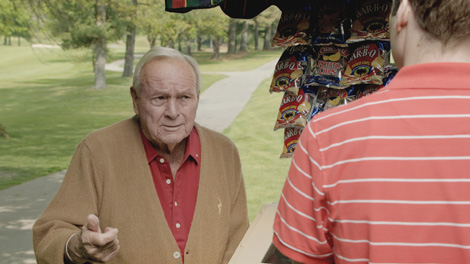MESSAGE MISMATCH: MAKE THE GAME MORE FUN, SPEED UP PLAY AND SPEND MORE TIME LOOKING FOR BALLS?

By Westray Battle
The recent campaign by the USGA, “While We’re Young” intended to speed up pace of play is great for the game. Unfortunately, the recent golf course design trend to grow large areas of high fescue or “no mow” grass is directly at odds with improving pace of play or making the game more fun for most amateurs.
There is nothing more frustrating in golf than hitting a decent shot-say 10 yards off of the fairway—and not being able to find your ball because the fescue is so high. While U.S. Opens with brutal rough setups are legendary at courses like Shinnecock Hills, these areas add significant time to searching for balls, increasing round times to five hours and significantly reduce the enjoyment of the game. Weekend amateurs most often do not have the benefit of forecaddies and thousands of spectators to help find their ball. What’s good for the U.S. Open is ludicrous for everyday golf.
Also, it is important to note that despite the rugged, high fescue at Shinnecock Hills, you can most often find your ball there. All too often, lesser courses overdo fescue in areas that are generally not out of play, and in addition, allow the fescue to layer over top of itself and create near certainty that the ball would be lost or unplayable.
These fescue areas provide a very scenic and natural look, reduce golf maintenance hours and costs, require less irrigation, increase natural habitat and require less pesticides. While these are all good things, it must be noted that that when overdone too close and too often to greens and fairways, it comes at a detrimental cost to the enjoyment and length of time playing the game. This ultimately drives new players from the game and is exactly the opposite type of measure we should be employing to our golf courses.
While we’re on the topic, I find this is the most widely misinterpreted rule in golf. Although people seem to understand that when they lose a ball, they are required to go back to “as nearly as possible” where they hit the original shot and take a one-shot penalty, people rarely do. (especially in the Ponce with higher handicappers.) With today’s push for faster rounds, it seems ridiculous to walk back over 200 yards to play again. Playing partners should encourage playing more provisional balls when the ball lands in these hard-to-find, high fescue grass areas.
After searching for five minutes and failing to find their ball, most players incorrectly treat the lost ball like a Red Lateral hazard and drop the ball with a penalty of one stroke. (So if they lost their drive, they are hitting 3.) This is preposterous. While playing in a recent tournament with a high single-digit handicapper, he did this routinely without guilt. This has become common practice.
I played last week with British Captain Dom Clive and in that same situation, (Drive lost out of bounds – no provisional – lost ball – walking) he would employ an elegant solution, and drop in the closest spot most likely where his ball was in the fescue and lay 3, hitting his 4th shot. (He assumed that he would have had to drop and re-play from the teeing ground and hit his third shot.) This also is against the rules of golf, but a much fairer solution than treating the lost ball like a lateral hazard.
Solutions
We must encourage Golf Club Committees and Greens keepers to properly maintain these areas so it looks great, but is also playable and not too difficult to find your ball. (It should be fine and not layer over itself – this is the sign of too much fertilizer, water or poor species selection.)
We must urge the USGA to implement a rule, like Captain Clive’s solution, that creates a play without having to walk all the way back to the previous shot, killing pace of play.
In the meantime, we must suggest our playing partners to hit more provisional balls when they hit into hard-to-find fescue areas. I would also suggest that tournament chairmen explain proper procedures for lost balls so that everybody is playing under the same set of rules.
An Interesting Conversation about the problem on Golf Club Atlas: Is Tall Fescue Overdone?
http://golfclubatlas.com/forum/index.php?topic=35696.0;wap2
Tips for Improving Pace Of Play
http://www.usga.org/MicroSiteContent.aspx?id=21474855490
Improving pace of play: 5 entities that do it right
http://www.golfchannel.com/news/randall-mell/pace-of-play-five-entities-that-do-it-right/
Read the Rules for Lost Balls
c. Ball Not Found Within Five Minutes
If a ball is lost as a result of not being found or identified as his by the player within five minutes after the player’s side or his or their caddies have begun to search for it, the player must play a ball, under penalty of one stroke, as nearly as possible at the spot from which the original ball was last played (see Rule 20-5).